The green tea with the white leaves
Anji, 28th – 29th April
Anji is a hilly and calm county located just few hours drive southwest of Shanghai. It is famous in China for its bamboo forest, bamboo artifacts and Anji Bai Cha, the green tea with the white leaves.
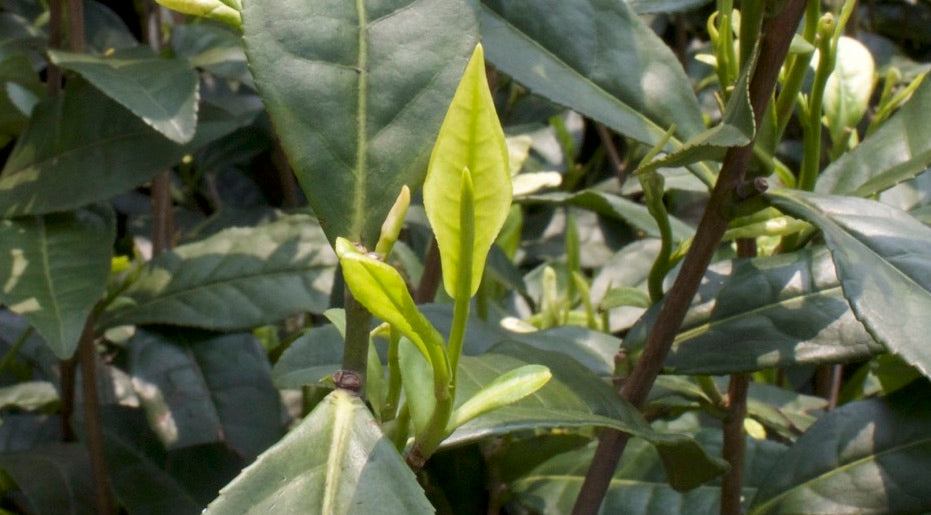 The white leaves of Bai Ye Yi Hao, the tea plant variety (cultivar) used for Anji Bai Cha.
The white leaves of Bai Ye Yi Hao, the tea plant variety (cultivar) used for Anji Bai Cha.
There is no railway in the county, so I have to rely on busses. I spend the night in a small town, not far from Dipu, Anji’s main city. No traffic, people walking slowly and relaxed along the narrow roads; I like the countryside attitude! I eat in a Muslim restaurant and then go to bed.


Impressions from Xiaoshu, a calm town surrounded by hills.
In the morning Huifang pick me up at the hotel. We take a bus to her village, where her family produces Anji Bai Cha. She leaves in a huge and modern house. Anji Bai Cha is very popular in China and high-priced; as far as I know the most expensive among the green teas. Other farmers in town made a fortune selling tea and built similar houses.
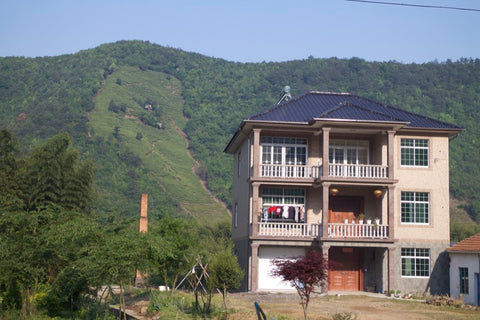

The farmers leaves in luxurious houses but, except for the house itself, their life is still simple and rural. It seems like they have spent all the money in the building with nothing left for furniture and cloths.
We spend the whole morning tasting tea in Huifang’s tearoom. We compare teas of different harvest days; the earlier the crop, the smaller and more expensive the leaves. The taste should go accordingly, but it’s not always the case. We taste blind to avoid being influenced by price and appearance. Also Huifang must admit that, among the three teas, the cheapest tastes best; it is sweeter and fuller, with a clear umami aroma.
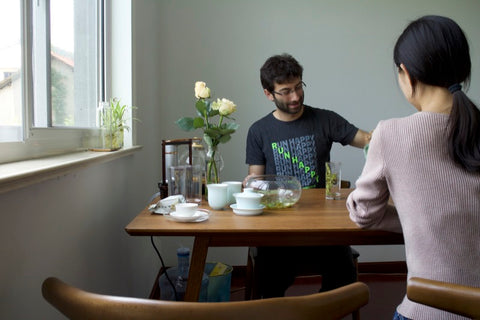
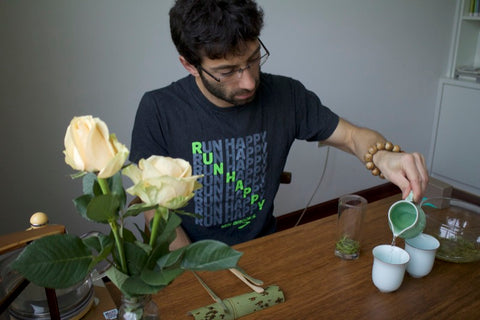

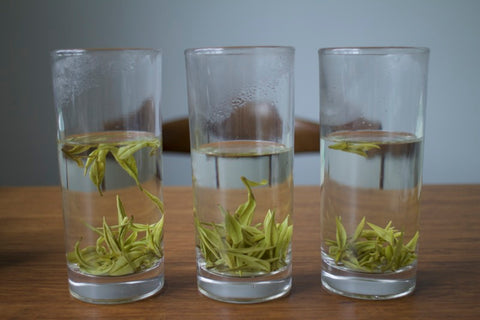
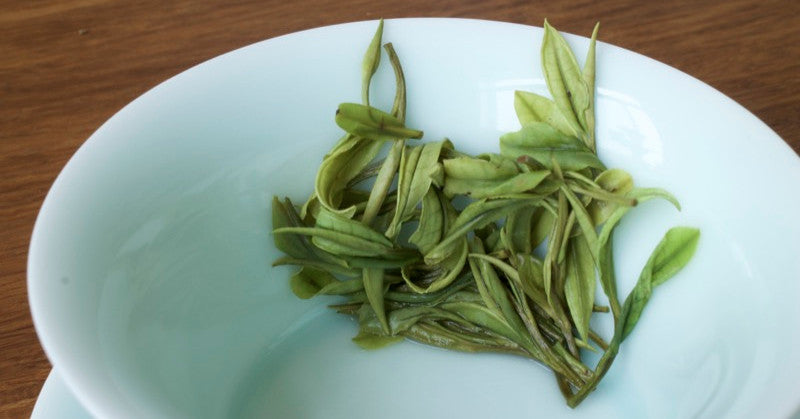
Anji Bai Cha tasting. Leaves from different crops appear and taste different.
The production of Anji Bai Cha is quite simple. After the harvest the leaves are withered for three hours, then heated at high temperature in a machine to prevent oxidation; the movement of the machine also gives the classical needle-shape to the leaves; the remaining moisture is removed by baking the leaves for 15 minutes in a oven at 100°C.

Huifang’s leaves processing room: withering pads on the right, heating machine on the left, green oven on the left.
We eat lunch together with her family and then go for a hike to the tea gardens. Today is the last harvest day. Her father just started drastically cutting the bushes with the power saw while her mother is picking the last leaves. The bushes will grow again during summer.
The air is clean, the sky blue and the landscape beautiful. Clean lakes, water streams and green bamboo woods.

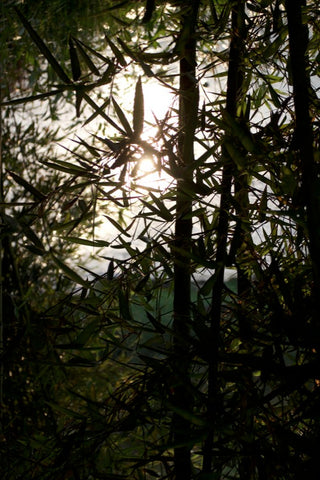


Beautiful and peaceful landscape in the Anji countryside.
Back home we start a new tea session. I have been carrying teas from our Sichuan supplier for days in my backpack and now I finally have the time to try them. Beside the classical Sichuan’s green teas –Ganlu and Zhu Ye Qing– we have received also other unknown and therefore affordable green teas, a Chuan Hong Cha (traditional Sichuan black tea), two Mei Zhan Hong Cha (black tea produced with the aromatic Mei Zhan tea variety, which is typically used in Fujian for oolong teas) and Mengding Huang Ya, one of the three Chinese yellow teas; the other being Huoshan Huang Ya (our supplier will send us samples to Shanghai) and Jun Shan Yin Zhen (for this we have a reliable supplier in Shanghai).
It takes a few hours to taste all the teas. I will order for sure the sweet and fresh Ganlu and the darker of the two Mei Zhan, which convinced me for aroma, body and price. I have tried other Mei Zhan black tea before and all of them were only slightly oxidized; not completely black. Low-oxidized leaves have aroma but the infusion will lack of strength and body; features that are usually expected in black tea.

Sichuan black teas: Tasting Mei Zhan Hong Cha and Chuan Hong Cha.
Anji, 30th April
Again a short night. Just five hours of sleep to catch the first bus down to town. Within an hour or so we are in Dipu, the main city of the Anji county. China is divided in provinces and provinces in counties. The name of the county designates often also its main city, although locals use other names. This is often confusing because you never know if people are speaking about the county or the city. Also GoogleMap is confused, the name of the cities, town and villages are often messed up.
In Dipu I visit the bamboo market. Tens of shops, one next to each other, selling any kind of goods made of bamboo. Carpet, lamps, furniture and, of course, also teaware. Bamboo grows everywhere in Anji and there are plenty of artisanal bamboo workshops; so the choice is huge and the prices reasonable. I buy hand-woven saucers, trays for Michela –to serve the tea in the tea house– and a tea tool set: a section of bamboo cane for presenting the leaves before steeping, plies to hand the cups to the guests and a finely curved stick to slide the tea into the teapot.

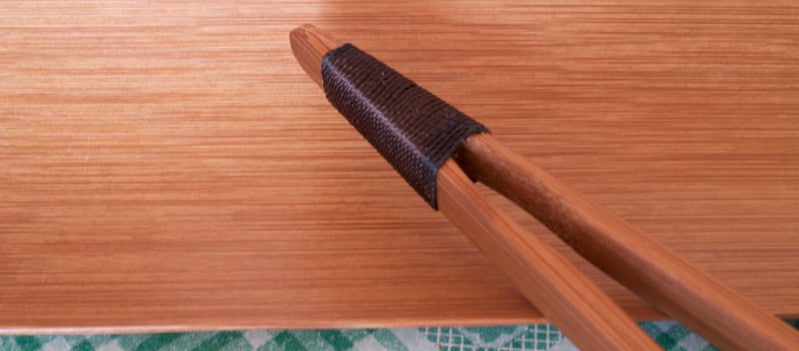
A gracious tea tool set purchased for Nannuoshan in the Anji bamboo tea market.


Hand-woven saucer, now part of Nannuoshan’s inventory.
I leave the jam-packed backpack and a big bag full of teaware in a restaurant and spend the remaining two hours in one of Dipu’s tea markets. Here I taste several teas from different producers and collect samples for later tasting. Then take a cab to the brand new long-distance bus station to catch a bus to Shanghai.
In the last days I sent many parcels with tea and teaware to our warehouse in Shanghai. It’s better to go back to write the inventory before I forget what I bought where and at which price. Moreover I have also sent some green tea that I want to keep in the fridge before shipping to Berlin.
Written by Gabriele





